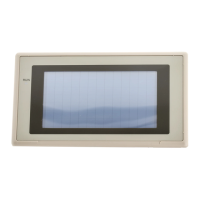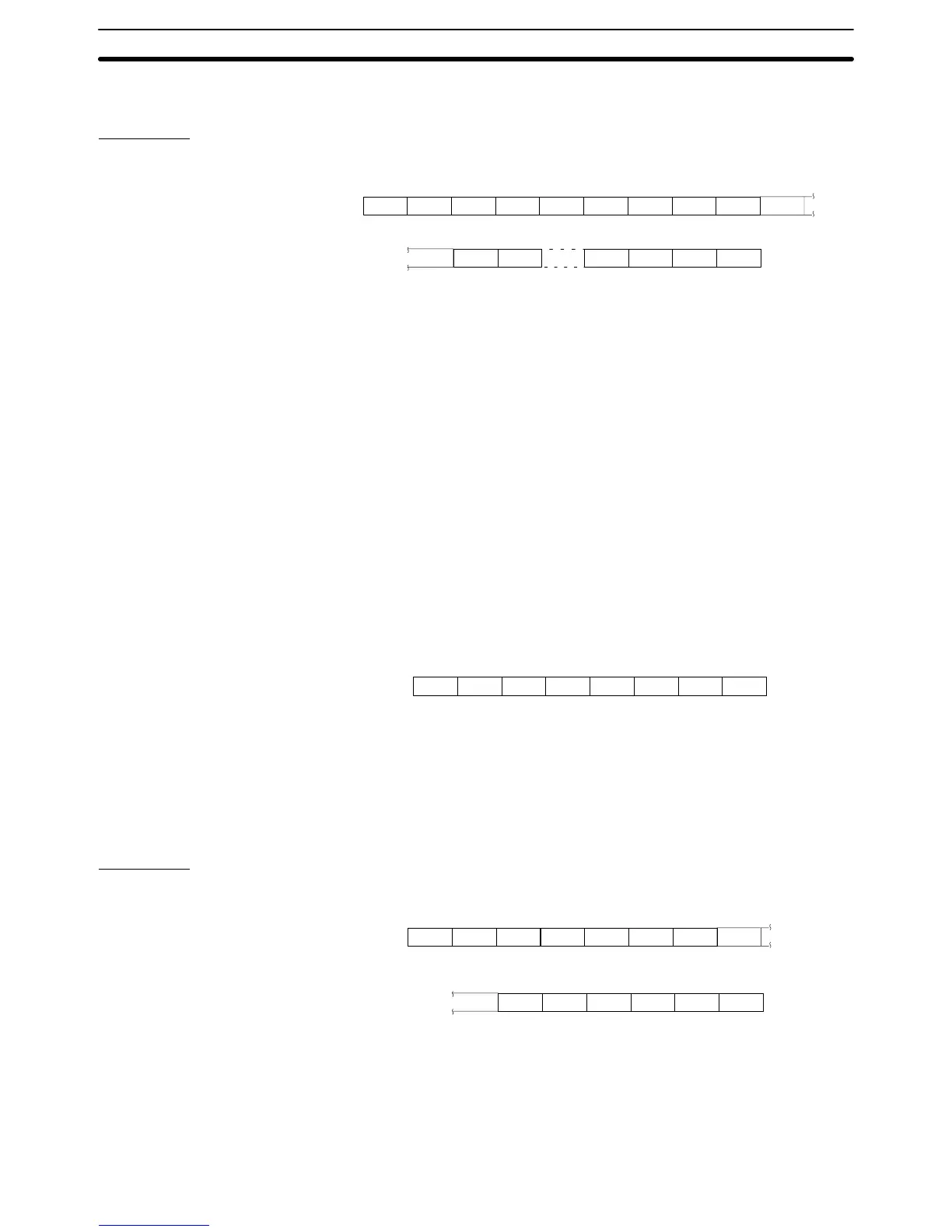4-3SectionCommands/Responses
386
4-3-11 PT Memory Batch Write (FILL) Command (Sent from Host to PT)
Command
Format
m
1B 46
[ESC] F
e3
b3
e4
4D
Mb1
d1
b2
0D
b4 e1 e2
d4
(s1) (s2) [CR]
* * * * * * * * * * * *
* * * * * ** * * * * *
* *
m: Checksum present/absent (1 BCD digit)
0: Absent
1: Present
b
1
to b
4
: First written word address (4 BCD digits)
0000 to 9999
e
1
to e
4
: Final written word address (4 BCD digits)
0000 to 9999
d
1
to d
4
: Data to be written (1 to 4 hexadecimal digits)
0 to FFFF
H
It is possible to omit initial zeroes so that there are less than 4
digits.
s
1
, s
2
: Checksum (2 hexadecimal digits)
If m is 0, omit this setting.
Response
Only if Yes is set for the Response memory switch, the response indicated below
is returned on normal completion.
Format
1B 46
[ESC] [CR]F
4530 30 0D4D
M
30
0 0 s1 s2
s
1
, s
2
: Checksum (2 hexadecimal digits)
This is always added (fixed as 0EH).
Writes the specified data to all the words within the range specified by the first
written word address and final written word address.
4-3-12 Numeral Memory Table Clear Command (Sent from Host to PT)
Command
Format
m
1B 43
[ESC] C
(e3)
(b3)
(e4)
4E
N (b1) (b2)
0D
(b4)
(e1) (e2)
(s1) (s2) [CR]
* * * * * * * * * *
* * * ** * * * * * * *
m: Checksum present/absent (1 BCD digits)
0: Absent
1: Present
b
1
to b
4
: First cleared numeral memory table entry number (4 BCD dig-
its)
0000 to 1999
Function

